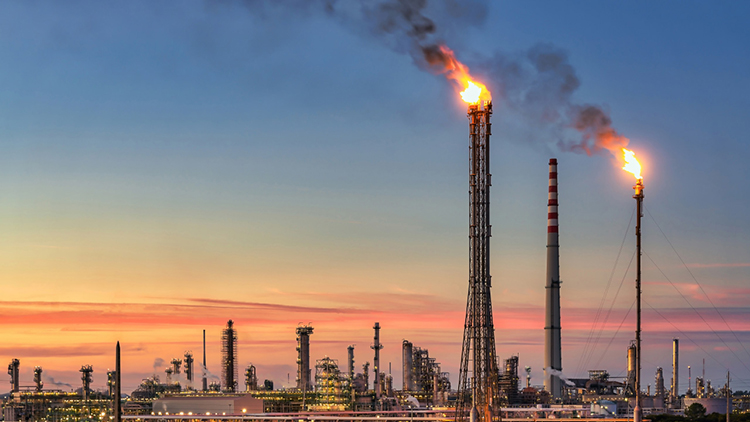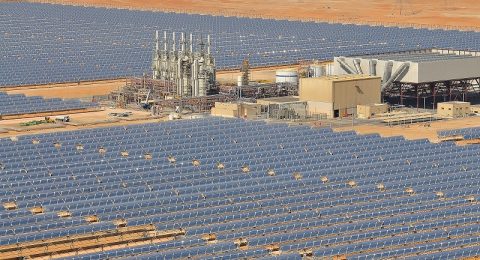Since the start of oil production more than 160 years ago, gas flaring, the process of burning natural gas associated with oil production, continued to cause air pollution. Worse, this process proved wasteful as the amount of gas currently flared worldwide (around 148 billion cubic meters in 2023) could power the whole of sub-Saharan Africa, as the World Bank recently stated.
Fortunately, many studies have been conducted to best utilize the flared gas (FG) instead of wasting it in the air. One of these studies is a joint American-South Korean study titled “Flare-to-hydrogen in oil and gas industries: Techno-economic feasibility of a net-negative alternative” which proposes an innovative solution to convert FG into hydrogen and utilize captured CO2 for enhanced oil recovery (EOR).
Environmental impacts of gas flaring
Notably, Flaring is a major source of CO2 emissions, methane, and black soot, all of which contribute to climate change.
Assuming a ‘typical’ associated gas composition, a flare combustion efficiency of 98%, and a Global Warming Potential for methane of 28, each cubic meter of associated gas flared results in about 2.6 kilograms of CO2 equivalent emissions (CO2e), resulting in over 350 million tons of CO2equivalent emissions annually.
The study conducted by Moosazadeh et al. focused on the development and analysis of a multigeneration system that utilizes FG from the oil and gas industry. The researchers sought three FG-to-hydrogen production scenarios: autothermal reforming with CO2 capture (AACP), autothermal reforming with CO2 capture and enhanced oil recovery (EOR) utilization (AACPE), and autothermal reforming.
The study’s results showed that the AACPE scenario is a promising carbon-reduction alternative, as it achieves a 72 % CO 2 rate at 32.84 $/kg CO 2 capture, sequestrates it in an oil reservoir, and produces 1.28 Mbbl of oil per year at 14.66 $/bbl.
Besides, AACPE has the lowest economic and environmental costs of hydrogen production with 1.69 $/kg H2 and 3.91 kgCO2/kg H2.
AACPE process
The process begins with the capturing of flared gas, which is then prepared for conversion into hydrogen.
The flare gas is fed into an Autothermal Reforming (ATR) reactor along with oxygen and steam. The reaction takes place over a nickel catalyst, producing syngas, which is a mixture of carbon monoxide (CO), carbon dioxide (CO2), hydrogen (H2), and other gases.
The syngas is then passed through high and low-temperature WGS reactors to convert CO into CO2 and produce additional hydrogen. The goal is to achieve a final CO content below 0.2%.
The shifted gas is sent to a carbon capture unit where an amine solution, such as monoethanolamine (MEA), is used to absorb CO2. The CO2 is then separated from the MEA solution in a desorber column.
The hydrogen-rich gas is sent to a PSA system to purify the hydrogen to 99.9%. Then pure hydrogen is compressed and made ready for transportation to the market. While, the captured CO2 is compressed to 40 bar and injected into an oil reservoir for EOR.
Throughout the process, a pinch technique is used to recover waste heat, improving the system’s thermal efficiency. Heat exchangers are employed to transfer heat between streams, minimizing the need for external utilities.
Is it economically feasible?
According to the researchers’ analysis, this process has the highest initial investment cost compared to ATR and ACCP processes due to the expenses associated with drilling new injection wells for CO2 injection. However, it generates additional revenue through increased oil production, which can offset the extra capital costs and contribute to the overall profitability of the system.
Furthermore, the AACPE process implementation would vary across different countries depending on some factors like natural gas prices, hydrogen prices, carbon taxes, and government policies.
The study found that AACPE process could produce significant amounts of hydrogen from FG in OPEC-plus regions, generating 12.62 million tons of hydrogen per year at an average cost of 0.94 $/kg of H2. It also could significantly reduce carbon emissions by up to 138.72mtpa.
Meanwhile, in non-OPEC countries, the AACPE system could produce 2.3 million tons per year (mtps) of hydrogen at a cost of 2.91 $/kg of H2 and could reduce emissions by up to 25.27 mtpa.
This study was supported by the National Research Foundation of Korea (NRF) grant funded by the South Korean government (MSIT), and the Brain Pool Program through the National Research Foundation of Korea (NRF) funded by the Ministry of Science and ICT.








